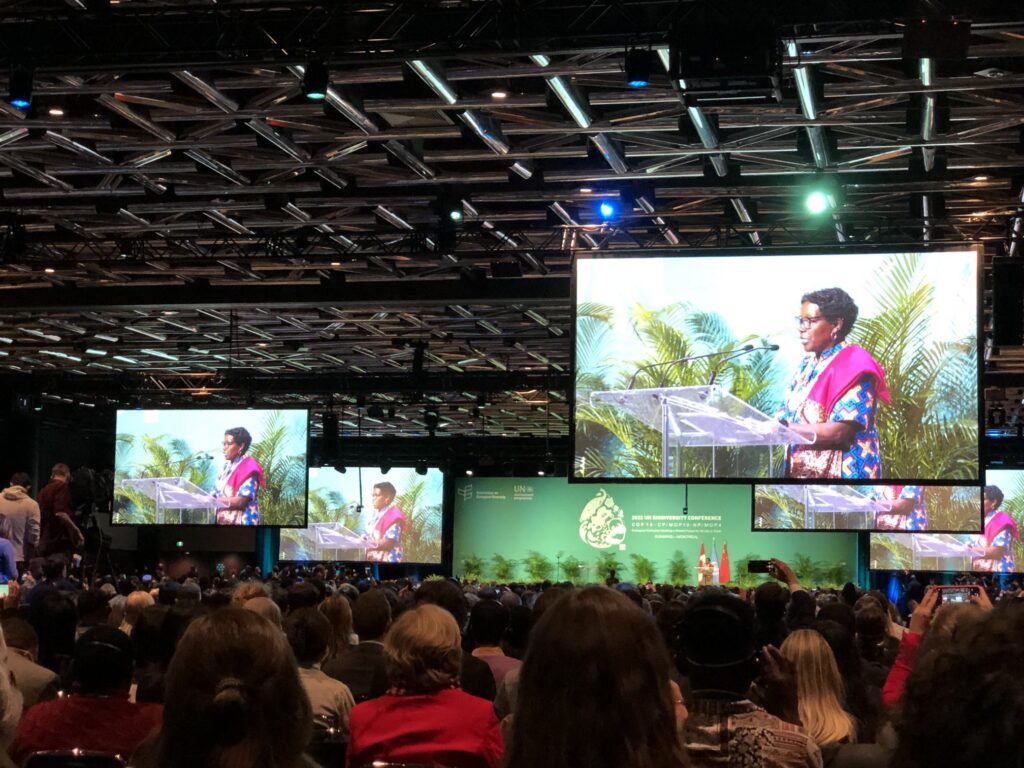Urgent action for Nature is required for our own survival

Today is the opening of the COP15, the biodiversity conference tasked with negotiating a course to halt and reverse biodiversity loss, so we are nature positive by 2030. After the fanfare of the ceremonial opening, which saw the Secretary General call on us all “to act for nature, act for biodiversity and act for humanity” there is now a switch in gears.
‘Humanity is a weapon of mass extinction [driving] a biodiversity apocalypse […] it’s time to forge a peace plan with nature […] it’s time to give back, [we must] act for nature, act for biodiversity, and act for humanity’
Antonio Guterres, Secretary General of the United Nations
Following four years of start-stop negotiations due to the Covid 19 pandemic, the time is finally here to roll up our sleeves once more. This is the moment where we must agree the post-2020 global biodiversity framework, a framework that must embody the urgent actions and provide the roadmap to addressing the biodiversity crisis.
There is a pervasive sense of anticipation, with tensions running high. Three days of technical negotiations through the Open-ended working group process have seen little headway, and there are many remaining and hotly debated topics that will get their first reading at the COP. This includes mobilisation of the money and technical support, which alongside securing benefits for people from genetic resources (i.e. to make medicines), have the power to derail the negotiation. The level of ambition of the framework is in lockstep with the money on the table, and low ambition will result from a lack of concrete commitments to fund the framework’s implementation.
The BirdLife family is pushing for an ambitious framework, one which will bring the transformative change so desperately needed to address the biodiversity crisis. We are here on the ground, with over 20 of our partners from all corners of the globe, actively pushing to make this a reality.
‘Without urgent action for nature delivered at COP15, we put our own economies, our own development, and literally our own survival at risk…We can actually fix this, we have demonstrated that conservation works, for nature, people and our economy. We now have less than 8 years to turn the tide of biodiversity loss, so we’re nature positive by 2030 – it’s time for urgency to drive negotiations appropriate to the gravity of the nature crisis’Patricia Zurita, CEO of BirdLife International
So what are our priorities for the post-2020 Global Biodiversity framework?
The framework must deliver a society-wide mission of being ‘nature-positive’ by 2030, driving concrete actions to halt and reverse biodiversity loss. Key to this will be pushing through the commitment to protect 30% of our lands and oceans. It must also integrate human rights, by fully respecting, protecting and fulfilling them, including the newly recognised right to a clean, healthy, and sustainable environment. It should also enhance synergies with related conventions and global policy processes.
It is vital that specific outcomes to 2030 are included – so that we’re able to track our progress and ensure we are on course to deliver the 2050 vision of living in harmony with nature..
In shorthand, we want to ensure that we halt species extinctions and reduce extinction risk, along with safeguarding, buffering and connecting our remaining intact ecosystems and key areas for biodiversity. To restore degraded ecosystems, we must make sure that protected areas and others important for conservation are managed effectively and equitably. The framework must contribute to tackling climate change and support sustainable development through nature-based solutions, while also addressing the intensive and unsustainable use of our lands and seas. Critically, it must redirect harmful subsidies as well as secure funding to close the gap on financing for nature. This all needs to be complemented by a robust monitoring framework and implementation process, to ensure that this latest plan for the natural world does not end up being another round of empty promises, but instead drives the ambitious changes we are in critical need of.
For more detail on our positions see birdlife.org/post2020
